Deze aankondiging bestaat enkel in het Engels. Raadpleeg hiervoor https://odnature.naturalsciences.be/mumm/en/blog_news/post_2275
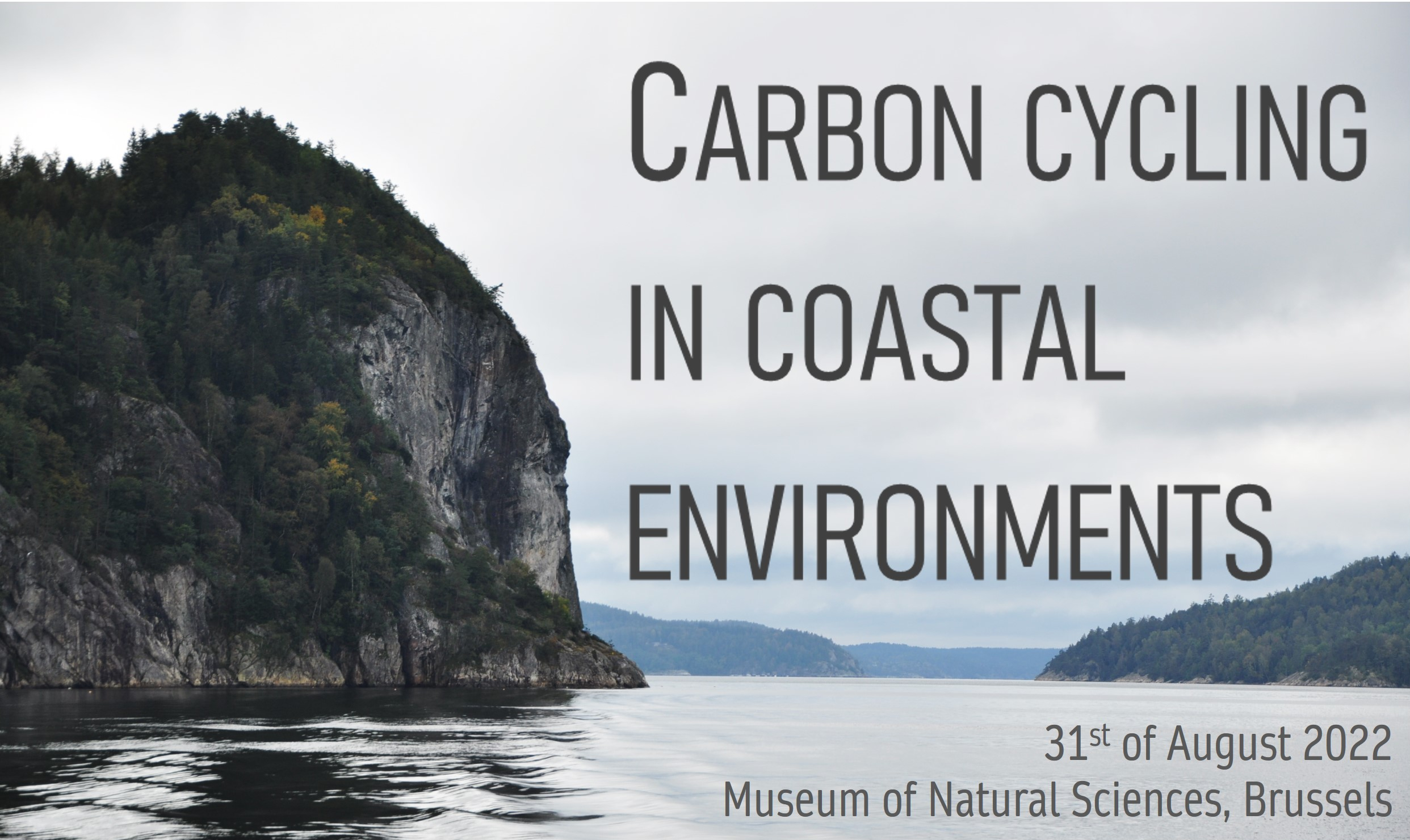

The scientific news platform for the Operational Directorate Natural Environment (or OD Nature in short)
Deze aankondiging bestaat enkel in het Engels. Raadpleeg hiervoor https://odnature.naturalsciences.be/mumm/en/blog_news/post_2275

Het combineren van mariene activiteiten, het winnen van lithium uit de diepzee, de overbevissing van diepzeesoorten en de onverwachte oceaanimpact van bosbranden en van nieuwe biologisch afbreekbare materialen behoren tot de vijftien ‘nieuwe’ problemen waarvan experten snel de impact op de biodiversiteit in onze zee- en kustgebieden verwachten te zien. Ze waarschuwen dat we nu werk moeten maken van preventie en mitigatie.
Een internationaal team van deskundigen heeft een lijst opgesteld van 15 kwesties die momenteel niet op ruime schaal aandacht krijgen, maar die in het komende decennium waarschijnlijk een belangrijke impact zullen hebben op de biodiversiteit in zeeën en kustgebieden (zie verder voor volledige lijst).
Bij de horizonscan waren 30 deskundigen op het gebied van mariene en kustsystemen uit 11 landen in het noorden en zuiden van de wereld betrokken, met uiteenlopende achtergronden, waaronder wetenschappers en beleidsmakers. De studie werd geleid door Dr. James Herbert-Read en Dr. Ann Thornton van het Department of Zoology van de Universiteit van Cambridge, en omvatte ook Prof. Dr. Steven Degraer van het MARECO-team (Marine Ecology and Management) van het Koninklijk Belgisch Instituut voor Natuurwetenschappen (KBIN). De resulterende publicatie ‘A global horizon scan of issues impacting marine and coastal biodiversity conservation’ werd op 7 juli 2022 gepubliceerd in het tijdschrift Nature Ecology and Evolution.
Dit proces van horizonscanning werd al eerder gebruikt om problemen aan het licht te brengen die later op de voorgrond zijn getreden. Een scan in 2009 leverde bijvoorbeeld een vroege waarschuwing op dat microplastics een groot probleem zouden kunnen worden in mariene milieus, wat intussen inderdaad het geval is.
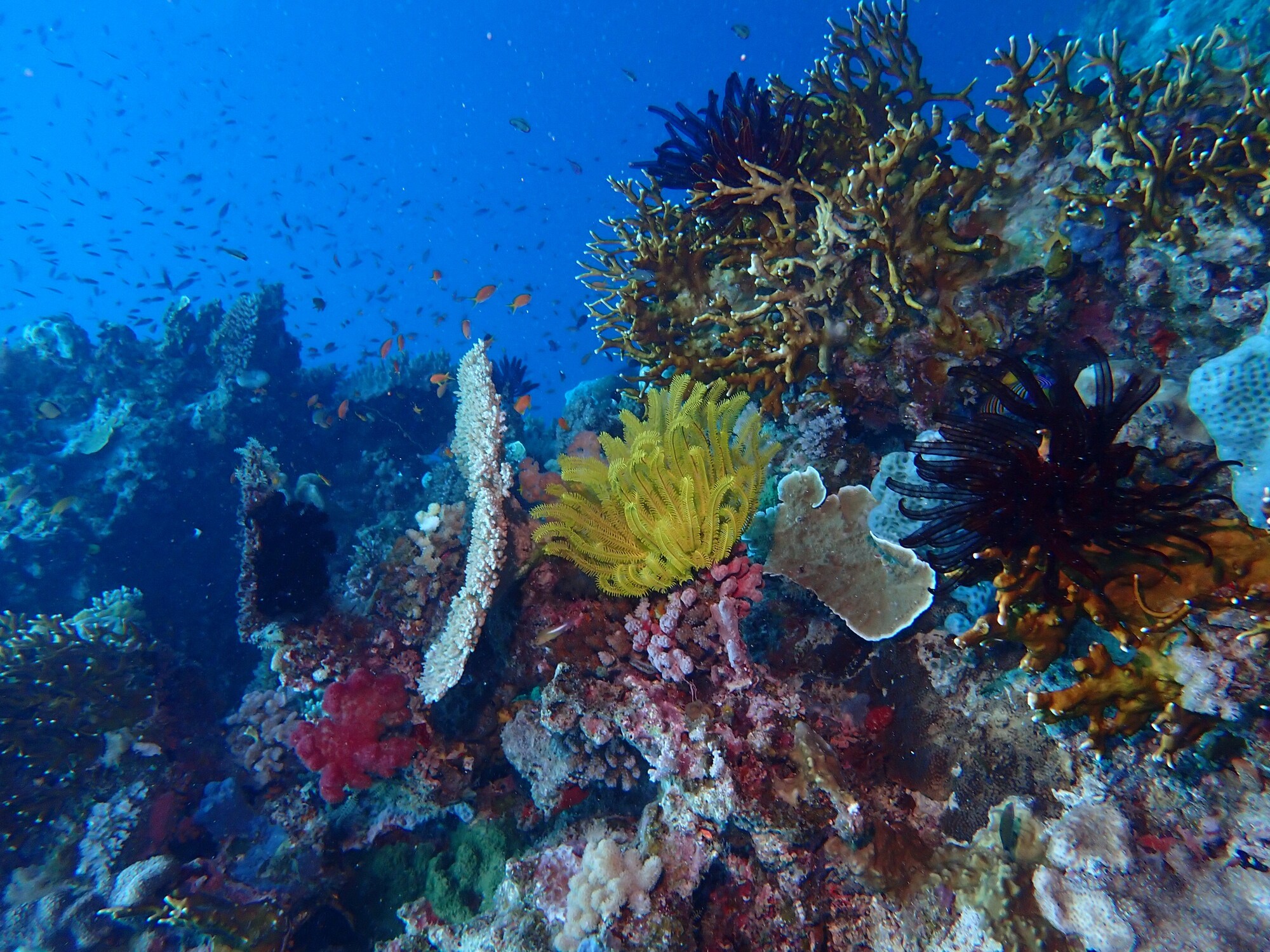
Ogenschijnlijk onverwachte problemen
Naast de bekende problemen die de biodiversiteit in de oceanen beïnvloeden, zoals klimaatverandering, verzuring van de oceanen en verontreiniging, richt deze studie zich op minder bekende opkomende problemen die binnenkort aanzienlijke gevolgen kunnen hebben voor de ecosystemen in zee en aan de kust. Deze kwesties omvatten de effecten van nieuwe biologisch afbreekbare materialen op het mariene milieu, de effecten van bosbranden op kustecosystemen en een “lege” zone bij de evenaar wanneer soorten uit dit opwarmende deel van de oceaan wegtrekken.
“Mariene en kustecosystemen worden geconfronteerd met een groot aantal opkomende problemen die slecht worden onderkend of begrepen, en die elk een potentieel effect op de biodiversiteit hebben”, aldus Dr. James Herbert-Read. Hij voegt eraan toe: “Door toekomstige problemen te belichten, geven we aan waar vandaag veranderingen moeten worden doorgevoerd – zowel op het vlak van monitoring als van beleid – om ons mariene en kustmilieu te beschermen”.
Zo wijst de publicatie bijvoorbeeld op de potentiële impact van nieuwe biologisch afbreekbare materialen op de oceaan. Hoewel dergelijke materialen worden aangeprezen als een oplossing voor het afvalprobleem, zijn sommige van deze materialen giftiger voor zeedieren dan traditionele kunststoffen. Herbert-Read: “Regeringen dringen aan op het gebruik van biologisch afbreekbare materialen, maar in veel gevallen weten we niet welke gevolgen deze materialen kunnen hebben voor het leven in de oceanen”.
Op het eerste gezicht kan ook de potentiële impact van bosbranden op kust- en mariene milieus onverwacht lijken, maar naast de vernietiging van habitats kunnen bosbranden waterverontreiniging veroorzaken door as en ander puin, sedimenten en voedingsstoffen die zich vele kilometers stroomafwaarts verplaatsen en onderweg het aquatische leven beïnvloeden, en het ontstaan van schadelijke algenbloei.
Afgezien van het feit dat steeds meer vissoorten zich door de opwarming van de evenaar weg bewegen, waarschuwen de auteurs ook dat de voedingswaarde van vis afneemt als gevolg van de klimaatverandering. Essentiële vetzuren worden meestal geproduceerd door koudwatervissoorten, dus als de klimaatverandering de oceaantemperaturen doet stijgen, vermindert de productie van deze voedzame moleculen. Dergelijke veranderingen kunnen gevolgen hebben voor zowel het mariene leven als de menselijke gezondheid.
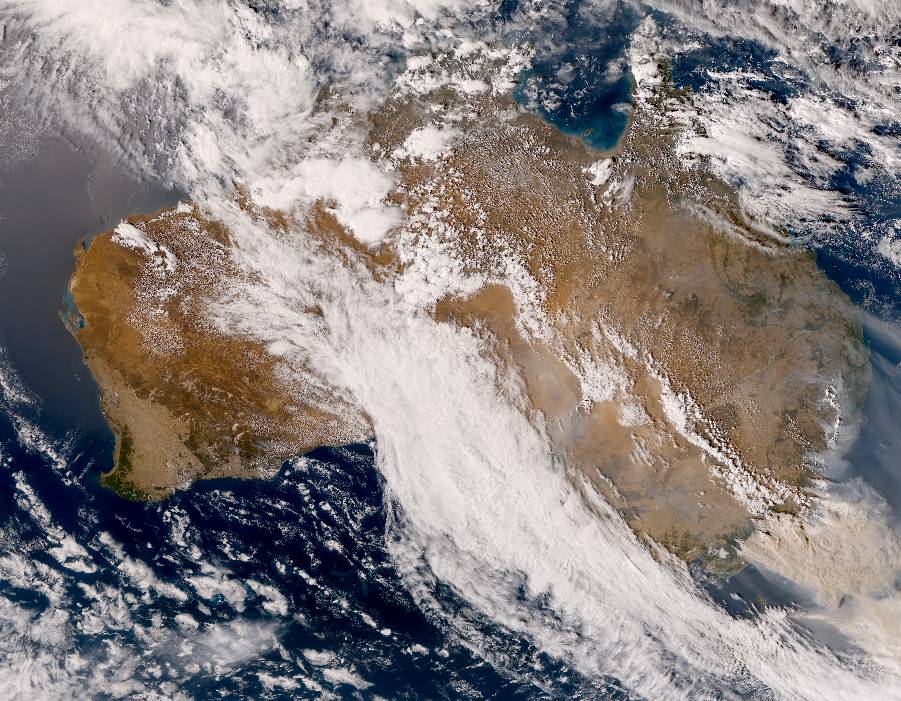
Ontginningskwesties
Verschillende van de geïdentificeerde problemen houden verband met de exploitatie van rijkdommen uit de oceanen. Zo zijn bijvoorbeeld diepzee-“pekelbassins” unieke mariene milieus die een diversiteit aan leven herbergen en hoge concentraties lithiumhoudende zouten bevatten. De auteurs waarschuwen dat de stijgende vraag naar lithium voor batterijen voor elektrische voertuigen deze milieus in gevaar kan brengen. Zij roepen op tot regels om ervoor te zorgen dat de biodiversiteit wordt geëvalueerd voordat pekelpoelen in de diepzee worden geëxploiteerd.
Hoewel overbevissing een onmiddellijk probleem is, werd in de horizonscan ook gekeken naar wat er daarna zou kunnen gebeuren. De auteurs denken dat er binnenkort misschien zal worden gevist in de diepere wateren van de mesopelagische zone (een diepte van 200 tot 1000 meter), waar vis niet geschikt is voor menselijke consumptie maar wel als voedsel aan viskwekerijen kan worden verkocht. “Er zijn gebieden waarvan wij denken dat onmiddellijke veranderingen enorme problemen in het komende decennium kunnen voorkomen, zoals overbevissing in de mesopelagische zone van de oceaan,” aldus Dr. Ann Thornton. Zij voegt daaraan toe: “Door dit aan banden te leggen, zou niet alleen een einde komen aan de overbevissing van deze visbestanden, maar zou ook de verstoring van de koolstofcyclus in de oceaan worden verminderd, omdat deze soorten een oceaanpomp zijn die koolstof uit onze atmosfeer verwijdert”.

Een ver-van-ons-bed-show?
Hoewel sommige van de opgesomde problemen misschien ver weg lijken, is de studie ook relevant voor het Belgische deel van de Noordzee. Steven Degraer van het KBIN verduidelijkt: “Kwesties zoals het goed beheren van in de ruimte gecombineerde menselijke activiteiten op zee of de mogelijke wijziging van de voedingswaarde van vis als gevolg van de klimaatverandering zijn ook van direct belang voor goed bestudeerde gebieden zoals de zuidelijke Noordzee”.
Omdat onze wateren op een drukke scheepvaartroute liggen, in de buurt van een aantal grote havens, en veel verschillende gebruikers tellen (scheepvaart, visserij, hernieuwbare energie, zandwinning, baggerwerken, toerisme, …), blijft het een voortdurende uitdaging om alle activiteiten op een beperkte oppervlakte met elkaar in overeenstemming te brengen, zodat de cumulatieve effecten aanvaardbaar en mitigeerbaar blijven. En natuurlijk zijn de gevolgen van de klimaatverandering niet uitsluitend beperkt tot tropische gebieden.
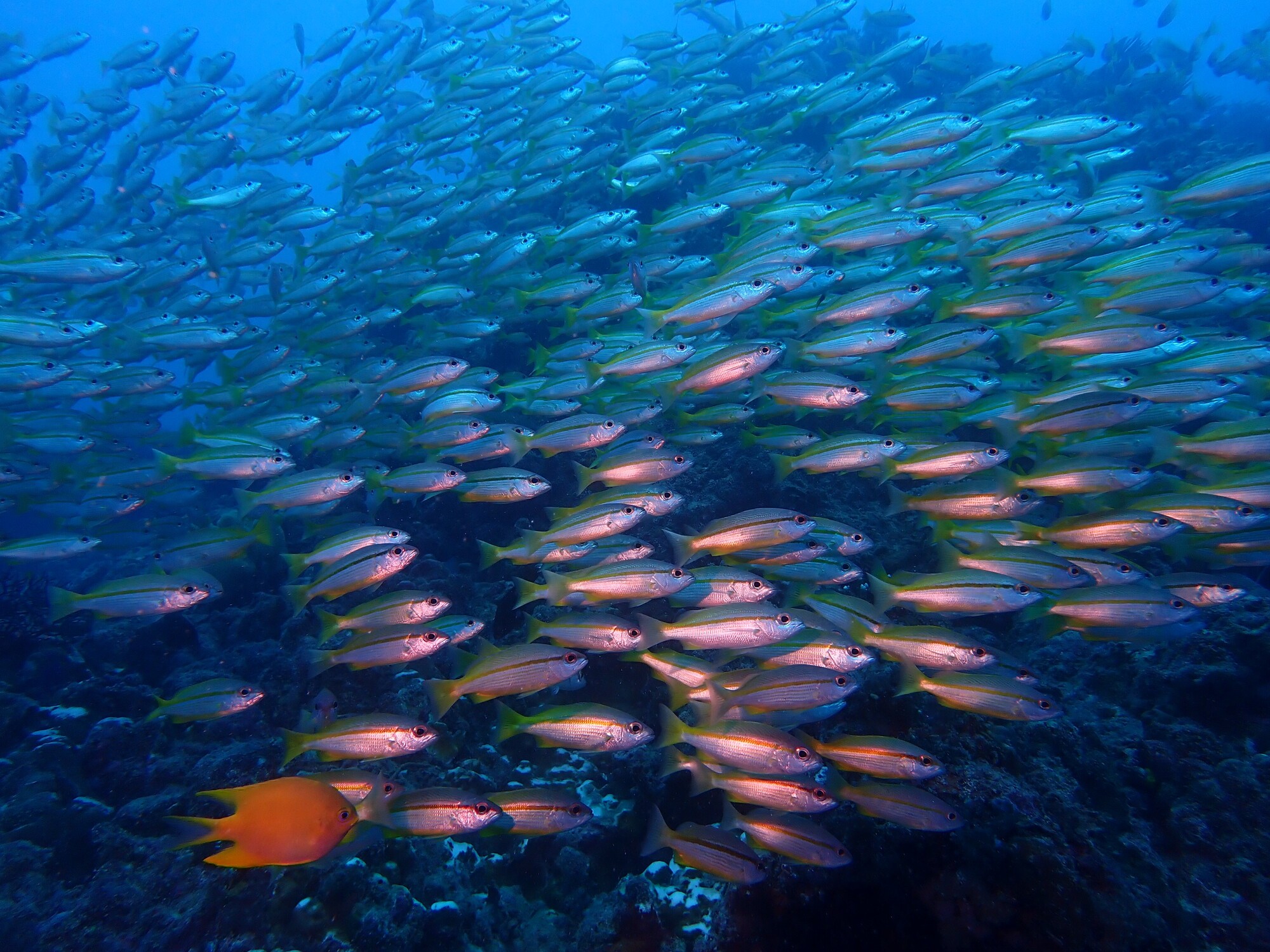
Aansturen van beleidswijziging en praktijken
Niet alle voorspelde effecten zijn negatief. De auteurs denken dat de ontwikkeling van nieuwe technologieën, zoals zachte robotica en betere opsporingssystemen onder water, wetenschappers in staat zal stellen meer te weten te komen over mariene soorten en hun verspreiding. Dit zal dan weer leiden tot de ontwikkeling van meer doeltreffende beschermde mariene gebieden. Maar zij waarschuwen ook dat de gevolgen van deze technologieën voor de biodiversiteit moeten worden geëvalueerd voordat zij op grote schaal worden toegepast.
“Onze vroegtijdige identificatie van deze problemen en hun mogelijke gevolgen voor de biodiversiteit in zee en aan de kust zal wetenschappers, natuurbeschermers, beheerders van hulpbronnen, beleidsmakers en de bredere gemeenschap helpen bij het aanpakken van de uitdagingen waarmee mariene ecosystemen worden geconfronteerd,” aldus Herbert-Read.
Het hoofddoel van de studie is dan ook de bewustwording te vergroten en investeringen aan te moedigen om de voorspelde problemen nu volledig te evalueren, en mogelijk beleidswijzigingen te stimuleren, voordat de problemen een grote impact hebben op de biodiversiteit.
Door vroegtijdig te waarschuwen voor de opgesomde problemen, werken de auteurs in synergie met andere lopende processen. De Verenigde Naties hebben 2021-2030 uitgeroepen tot het “VN-decennium van de oceaanwetenschap voor duurzame ontwikkeling”. Bovendien zal de vijftiende Conferentie van de Partijen (COP) van het VN-Verdrag inzake biologische diversiteit eind 2022 de onderhandelingen afronden over een mondiaal kader voor biodiversiteit. Doel is het verlies aan biodiversiteit te vertragen en om te buigen en tegen 2050 doelstellingen voor positieve resultaten vast te stellen.
Dit onderzoek werd gefinancierd door Oceankind.
De volledige lijst van voorspelde problemen
Ecosysteemeffecten
Exploitatie van hulpbronnen
Nieuwe technologieën
KBIN werkte mee aan de ‘Special Noordzee’ van het Nederlandstalig populairwetenschappelijk maandblad EOS Wetenschap. Samen met het Vlaams Instituut voor de Zee (VLIZ) en het Instituut voor Landbouw-, Visserij- en Voedingsonderzoek (ILVO) zetelden we in de Redactieraad, en meerdere KBIN-wetenschappers komen aan bod in diverse artikels. Het resultaat ligt sinds 23 juni 2022 in de rekken.

Maar liefst 130 pagina’s, over de RV Belgica, CSI zeezoogdieren, niet-inheemse schelpdieren, … en veel meer !!
Rep u naar het dichtstbijzijnde verkooppunt! Hard copies bestellen kan hier.
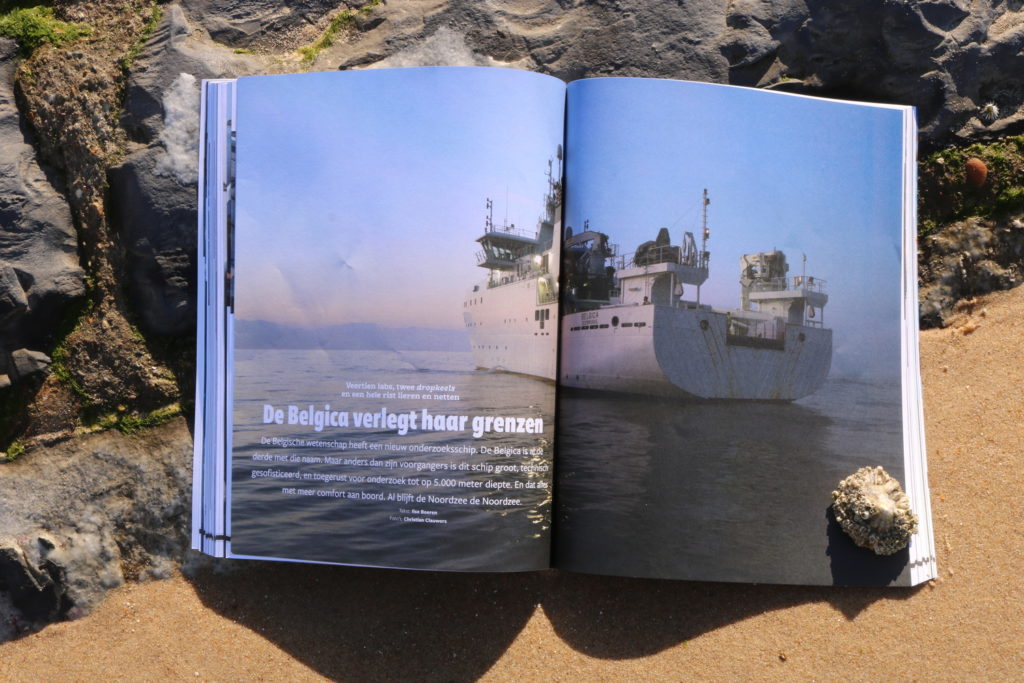
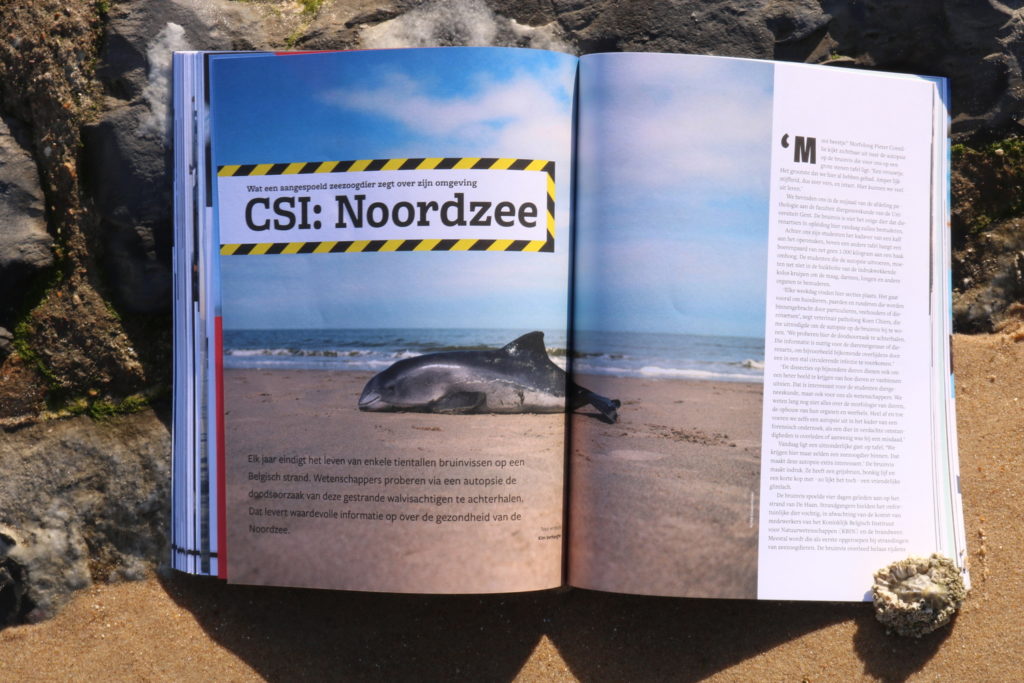
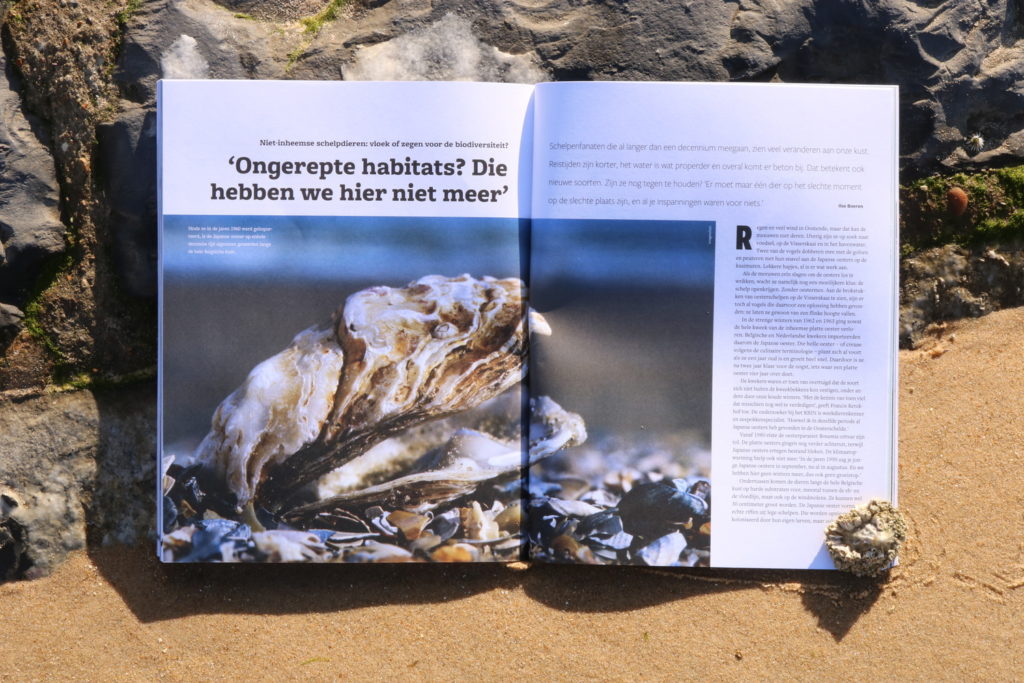
Op zaterdag 25 juni 2022 werd het nieuwe Belgische oceanografisch onderzoeksschip RV Belgica gedoopt. De officiële ceremonie vond plaats op de Rigakaai (North Sea Port) in de peterstad Gent, waar de RV Belgica voor deze gelegenheid enkele dagen lag aangemeerd. Niemand minder dan HKH Prinses Elisabeth bewees het schip de eer om doopmeter te zijn. Na het uitspreken van de doopformule « Ik doop U BELGICA en wens U en Uw bemanning een behouden vaart. » brak ze met succes een fles champagne op de romp.
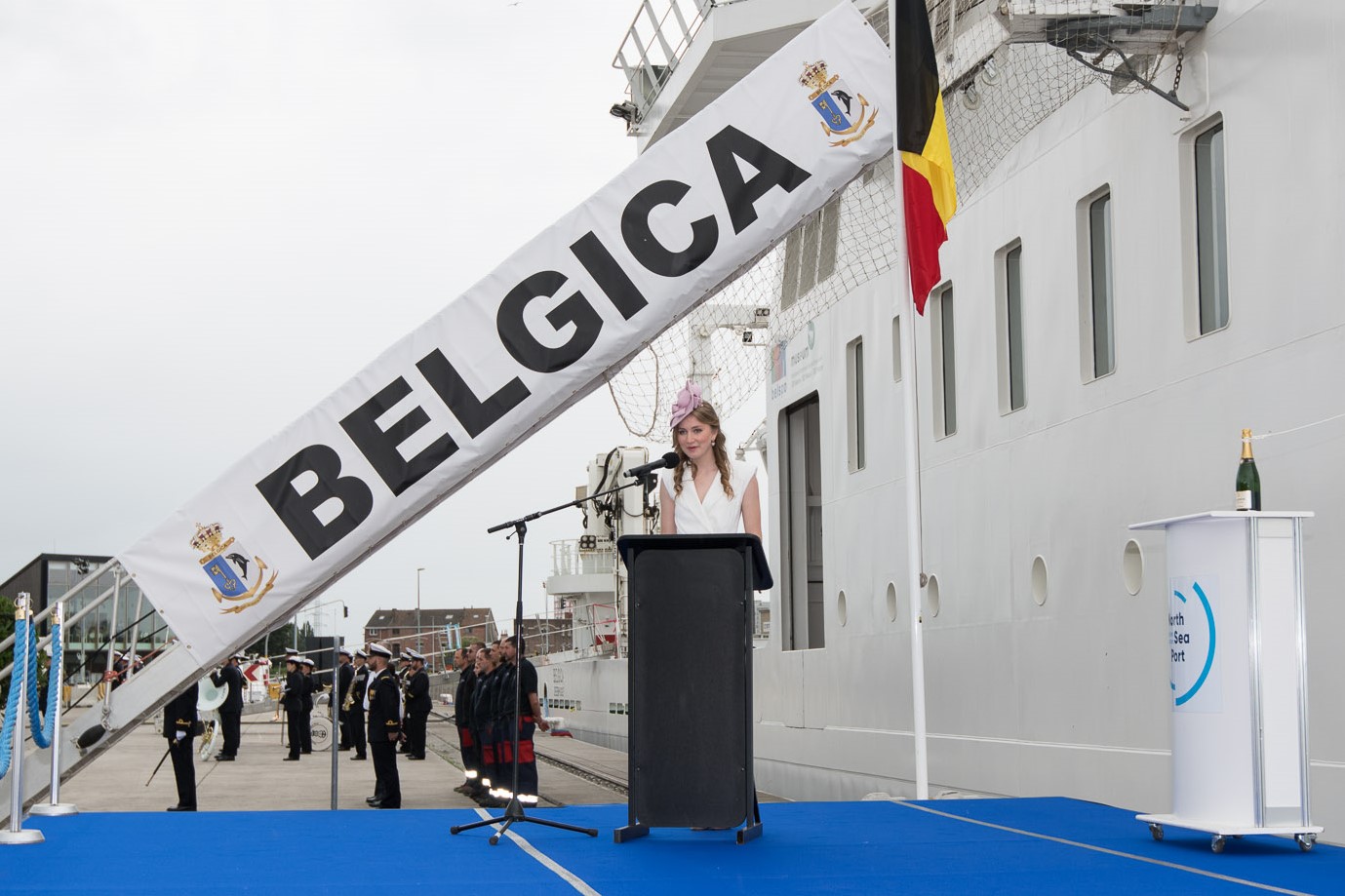
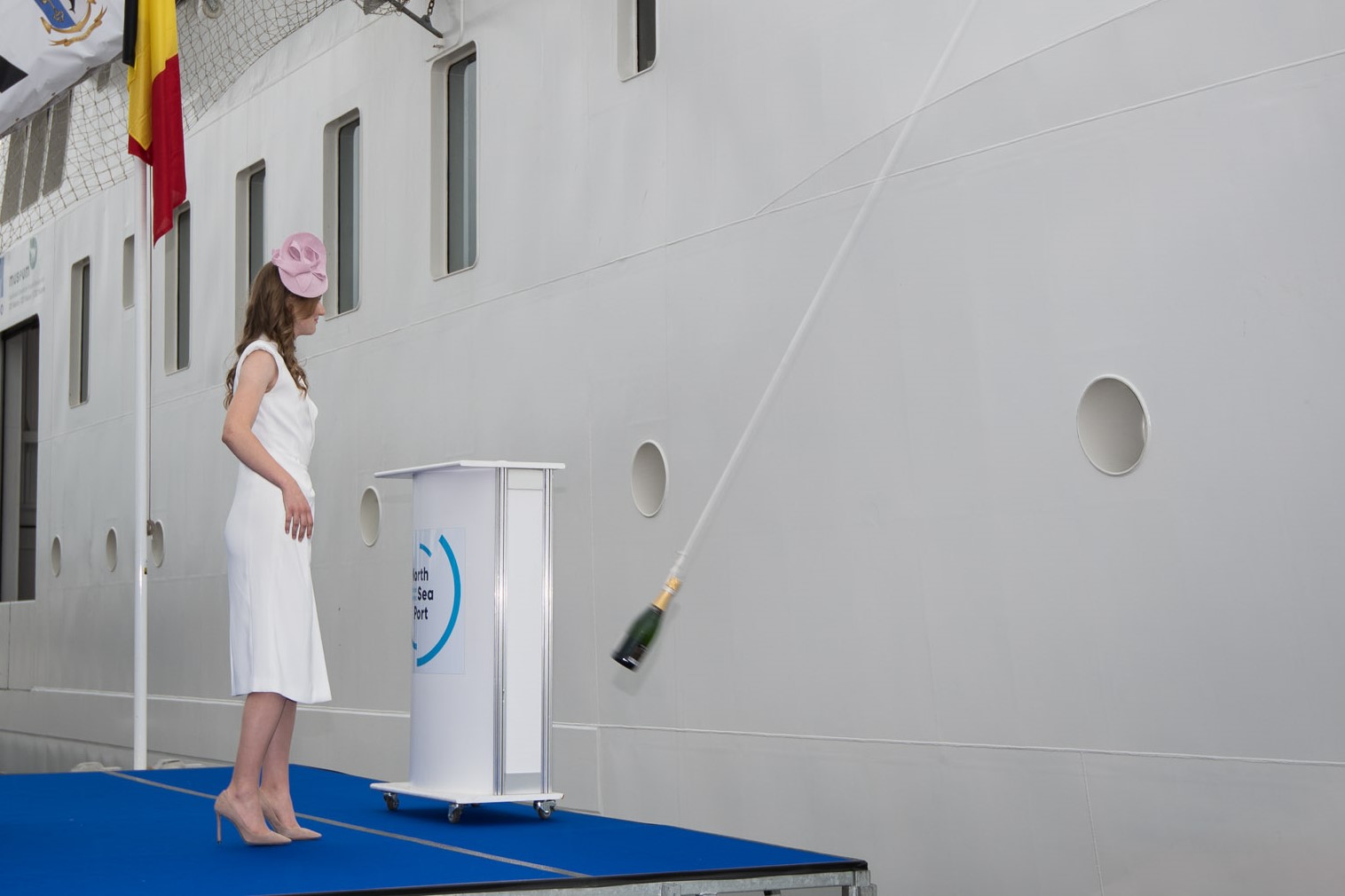
De doop van een schip is een restant van een oude traditie. In lang vervlogen tijden beoogde men de genade van de goden te verkrijgen door hen een offer te brengen, waarbij het bloed van een geofferde persoon werd gebruikt. Later verving wijn het offerbloed. Onder de zeevarenden verspreidde zich het gezegde: “Een schip dat geen wijn heeft geproefd, zal bloed proeven”. Het idee is dat een schip dat niet gedoopt werd moeilijkheden zal ondervinden: stormen, schade of ongelukken … Nog later werd de wijn vervangen door champagne, het symbool bij uitstek van feestelijkheid, viering, succes en geluk! Tegenwoordig beschouwen we dit natuurlijk als bijgeloof, maar vormt een doopceremonie nog steeds de uitgelezen gelegenheid om allen die zijn betrokken bij de realisatie, uitbating en operationalisering van een schip samen te brengen, het schip officieel welkom te heten en een voorspoedige toekomst te wensen. De RV Belgica, die op 13 december 2021 aankwam in België en haar wetenschappelijke activiteiten aanving op 27 januari 2022, kan voortaan dus zonder angst voor onheil de zee op (knipoog).
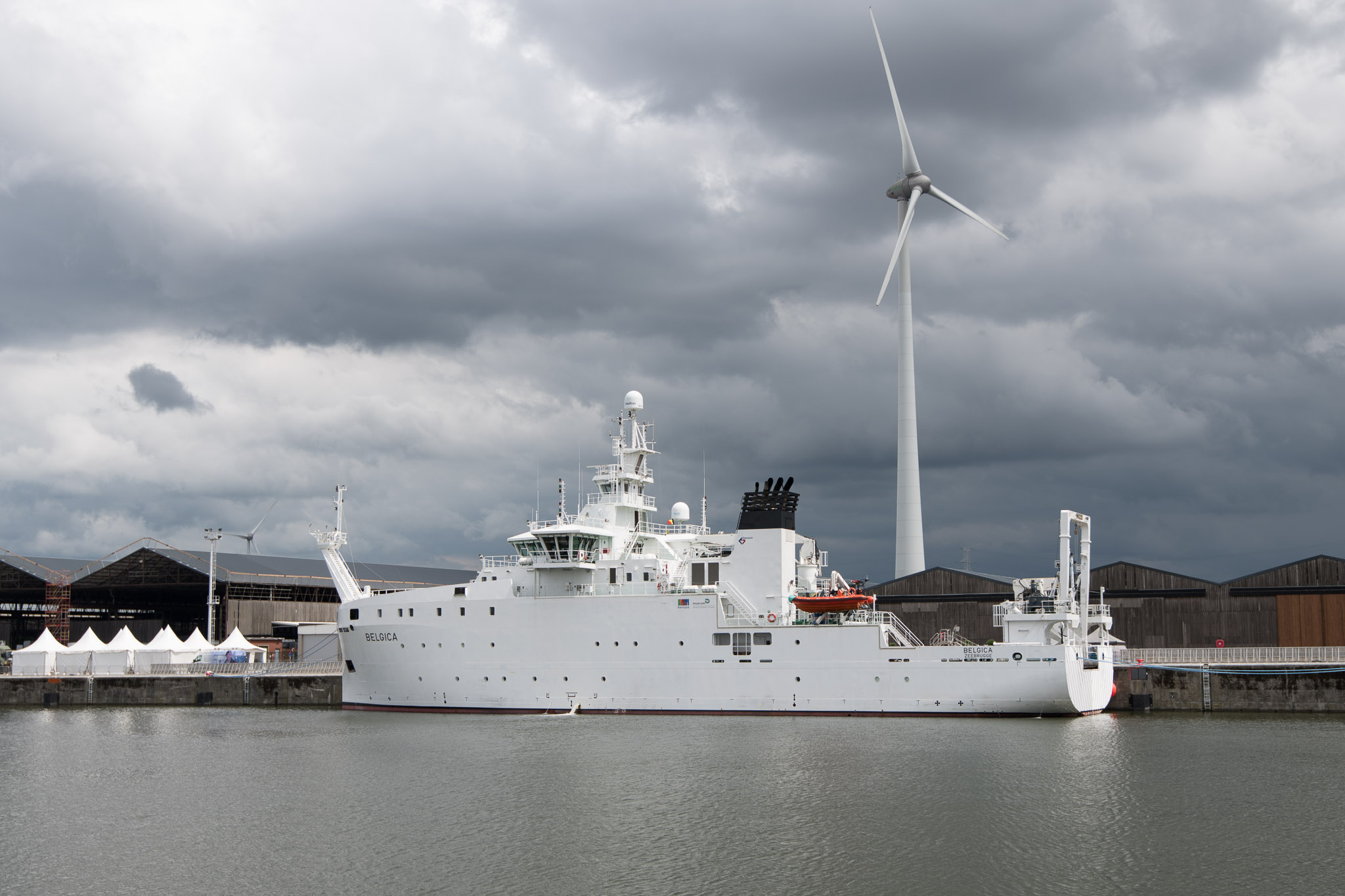
Prominente aanwezigen
De doopceremonie van de RV Belgica werd onder meer bijgewoond door Mr. Vincent Van Quickenborne, Vice-eersteminister en minister van Justitie en Noordzee, Mr. Thomas Dermine, Staatssecretaris voor Relance, Strategische Investeringen en Wetenschapsbeleid, Admiraal Michel Hofman, Vleugeladjudant van de Koning en Chef Defensie, Mevr. Carina Van Cauter, Gouverneur van de provincie Oost-Vlaanderen, Mr. Mathias De Clercq, Burgemeester van de stad Gent, Mr. Arnaud Vajda, Voorzitter van het Federaal Wetenschapsbeleid, Divisieadmiraal Jan De Beurme, Vleugeladjudant van de Koning, Commandant van de Marine en plaatsvervangend Admiraal BENELUX, Mevr. Patricia Supply, Algemeen Directeur van het Koninklijk Belgisch Instituut voor Natuurwetenschappen en Mr. Frank Monteny, Algemeen Directeur Onderzoek en Ruimtevaart van het Federaal Wetenschapsbeleid.
Talrijke vertegenwoordigers van de wetenschappelijke wereld, de diverse componenten van Defensie, de lokale, provinciale, gewestelijke en federale overheden, en de bedrijfswereld, zakten voor deze gelegenheid naar de Rigakaai af. Ook Mr. Marcos Freire, Algemeen Directeur van Freire Shipyard, de Spaanse scheepswerf die de RV Belgica heeft gebouwd, Mevr. Beatriz Larrotcha Palma, Ambassadeur van Spanje bij het Koninkrijk België, en Mr. Eric Derriën, Algemeen Directeur van de operator Genavir, woonden de doopceremonie bij.
Staatssecretaris Dermine: “Dat prinses Elisabeth het meterschap van de Belgica opneemt, is een grote eer en krachtig signaal dat ons gedeeld geloof in een ambitieuze toekomst voor het Belgische wetenschapsbeleid in de verf zet. Met maar liefst vier keer meer laboratoriumruimte dan de vorige Belgica, zal dit 71 meter lange vlaggenschip daar sterk aan kunnen bijdragen op vlak van marien onderzoek in België en Europa. Gent is een logische keuze als peter: in de Arteveldestad is de zucht naar kennis en de relatie tot het water bepalend voor de geschiedenis, de identiteit en de toekomst van de stad.”
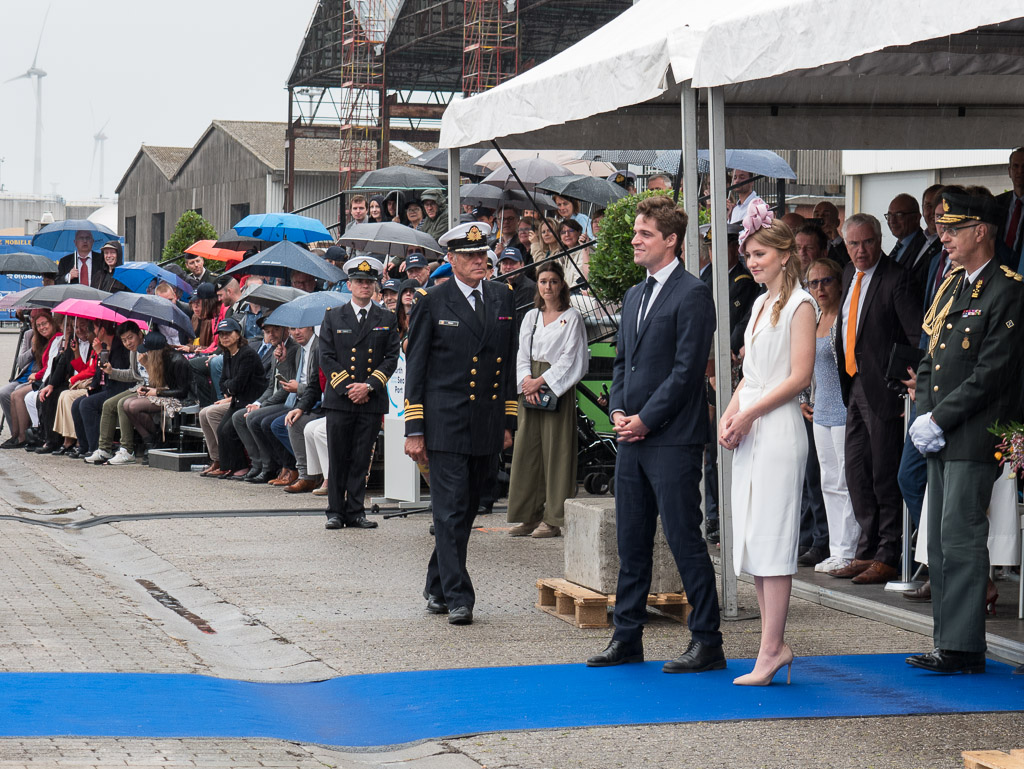
Veel protocol
Na de voorstelling van de genodigden en een welkomstwoord door Staatssecretaris Dermine, voorzitter van de plechtigheid, was de eigenlijke doop het eerste ceremonieel element van het gebeuren, dat in totaal net geen uur duurde. Daarop kregen de aanwezigen echter nog heel wat bijkomend protocol voorgeschoteld.
Zo werden de volgende attributen aan de RV Belgica geschonken: de Geus (een vierkante vlag met de nationale driekleur die wordt gevoerd bij wijze van groet) werd overhandigd door Staatssecretaris Dermine, de vlag van hulpschip van de Marine door Divisieadmiraal De Beurme, en de scheepsbel (een bronzen bel waarin de scheepsnaam is gegraveerd) door Burgemeester De Clercq.
Daarop volgde, met toestemming van HKH Prinses Elisabeth, de erkenning van de Gezagvoerder van de RV Belgica, Korvetkapitein Gaëtan Motmans, door Divisieadmiraal De Beurme. Deze richtte zich vervolgens tot Mevr. Supply voor de detachering van de Gezagvoerder, de Eerste Stuurman en de Tweede Stuurman bij het Koninklijk Belgisch Instituut voor Natuurwetenschappen.
De oorkondes over het peterschap van de RV Belgica werden door Gezagvoerder Motmans en Burgemeester De Clercq uitgewisseld, waarop de Burgemeester zich tot de aanwezigen richtte.
Tot slot scheepten de Gezagvoerder en de bemanning van de RV Belgica aan boord in, en nodigde Staatssecretaris Dermine HKH Prinses Elisabeth uit voor een bezoek aan boord, waar zij het gastenboek ondertekende en enkele technische en wetenschappelijke demonstraties kreeg.

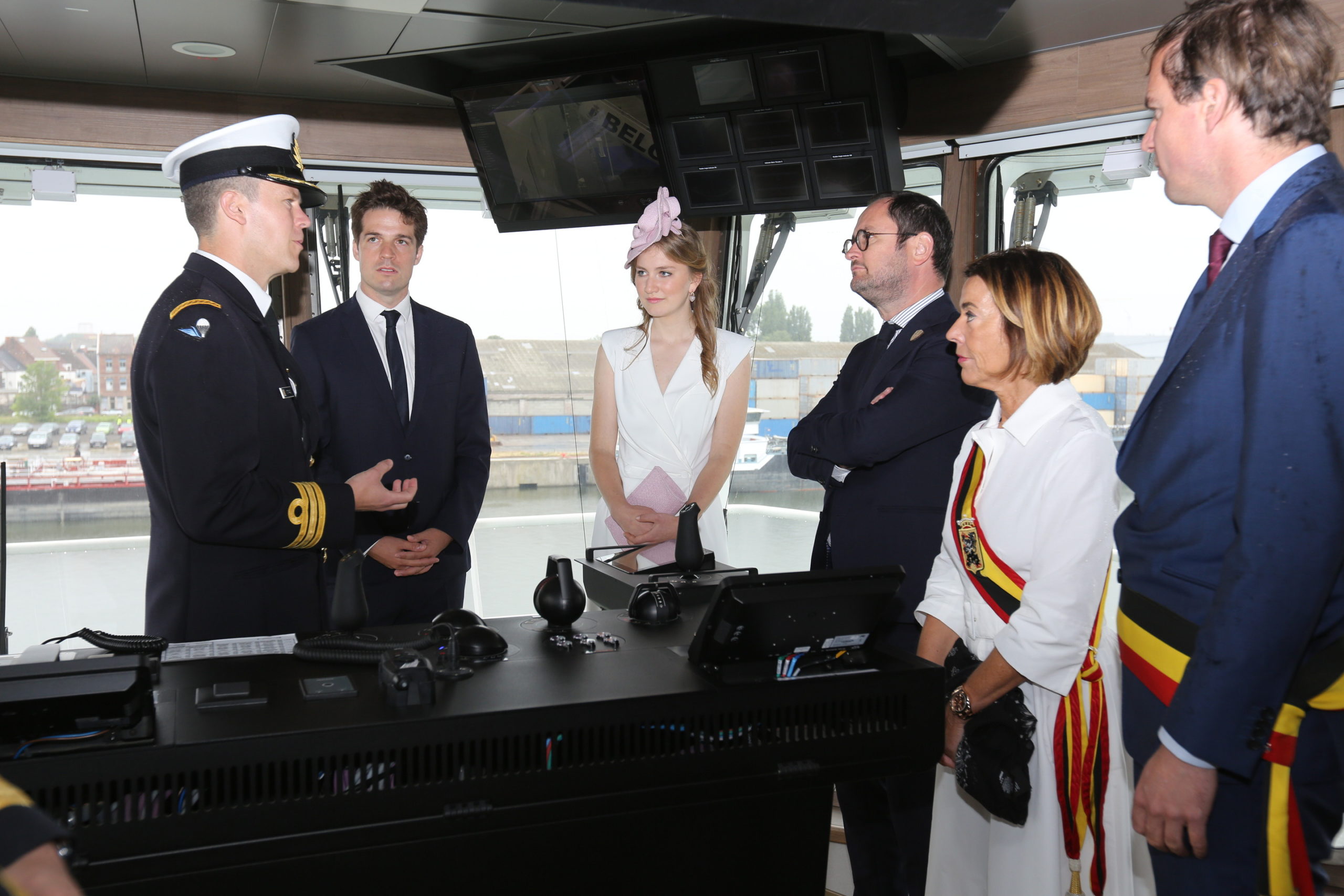
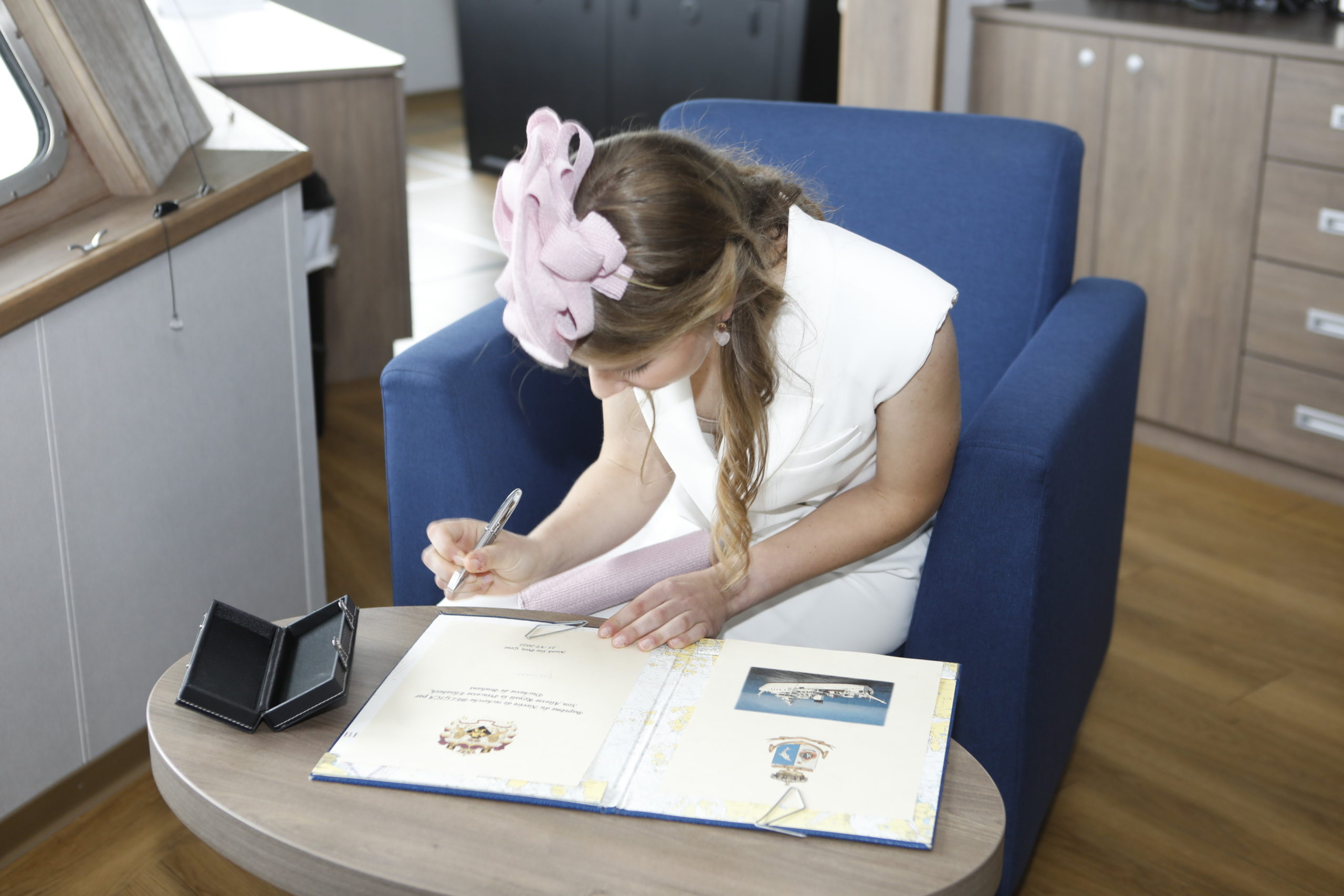
Bijkomende activiteiten
In het kader van het verblijf van de RV Belgica in Gent werden ook enkele publiek toegankelijke activiteiten voorzien. Op vrijdag 24 juni vond het wetenschappelijk symposium ‘RV Belgica – A ship for the future’ plaats in de Aula van de Universiteit Gent, en op zaterdag 25 juni (voormiddag) en zondag 26 juni (hele dag) kreeg het publiek de kans om het schip te bezoeken. Aan boord vond tevens een wetenschapsbeurs plaats, waarin verschillende wetenschappelijke gebruikers hun activiteiten voorstelden en demonstreerden. Dat men voor een bezoek aan de RV Belgica en de wetenschapsbeurs plaatsen moest reserveren bleek geen overbodige maatregel: de RV Belgica was doorlopend tot een maximaal toelaatbare capaciteit gevuld.
Op de Rigakaai kon men verder ook terecht voor een technologiebeurs waar bezoekers de activiteiten van DEME/NH Marine, Expo Marine, Hulpbetoon van de Marine, IC Defensie, ABC Engines, North Sea Drones, Statamat en Thales konden ontdekken. Ook enkele foodtrucks en gelegenheid voor een drankje was voorzien, terwijl jonge en minder jonge kinderen zich konden uitleven op een springkasteel, klimmuur en deathride.
De doopceremonie van de RV Belgica en de welkomactiviteiten waren een gezamenlijke organisatie van het Federaal Wetenschapsbeleid (BELSPO), het Koninklijk Belgisch Instituut voor Natuurwetenschappen (KBIN), de Belgische Marine, het Kabinet van de Staatssecretaris belast met Wetenschapsbeleid, het Militair Huis van de Koning, de operator Genavir, North Sea Port, de Stad Gent en de Universiteit Gent, met ondersteuning van de Lokale Politie Gent, de Scheepvaartpolitie en de Brandweer Zone Centrum.
Het Federaal Wetenschapsbeleid (BELSPO) vertegenwoordigt de Belgische Staat als eigenaar van de RV Belgica, het Koninklijk Belgisch Instituut voor Natuurwetenschappen (KBIN) beheert de kalender, het budget en de wetenschappelijke instrumentatie, de Belgische Marine levert het brugpersoneel en de thuishaven Zeebrugge, en de operator Genavir is verantwoordelijk voor het geïntegreerde beheer en de exploitatie van het schip.
Op dinsdag 28 juni 2022 vond een oefening plaats op zee waarbij een gesimuleerde olievlek binnen de offshore windparken werd opgeruimd. Het doel van deze oefening was het testen en optimaliseren van procedures, middelen en samenwerking tussen diensten voor als er zich een olieramp zou voordoen op zee. De dienst Marien Milieu van de FOD Volksgezondheid coördineerde de oefening met alle betrokken diensten. Vice-eersteminister en minister van de Noordzee Vincent Van Quickenborne bracht een bezoek aan de schepen. Het Koninklijk Belgisch Instituut voor Natuurwetenschappen leverde ondersteuning vanuit de lucht en modelleringen.
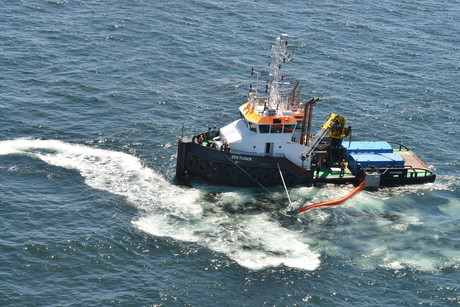
Snelle respons
Het aantal olievervuilingen op de Noordzee waarbij een opruimactie noodzakelijk is, is de laatste jaren sterk gedaald en in 2021 werd zelfs geen enkele olielozing vastgesteld in de Noordzee. Regelmatig luchttoezicht, scheepvaartinspecties en de controle van satellietbeelden zorgen voor een ontradingseffect wat betreft illegale lozingen. Een ongeval blijft echter mogelijk waarbij een snelle respons met pollutiebestrijdingsmiddelen noodzakelijk is om schade aan het milieu te beperken. Het toenemend transport van olie over water als gevolg van de oorlog in Oekraïne verhoogt het risico op dergelijk type incident.
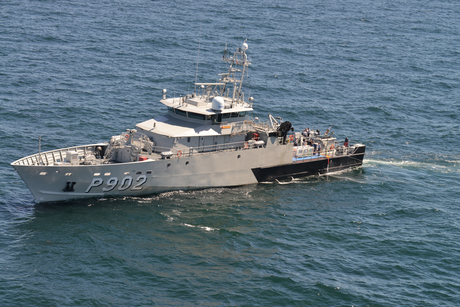
Te land, ter zee en in de lucht
Voor deze oefening werd een grote olievlek nagebootst met stro, die de windparken Seastar en Nobelwind binnendreef. Via de kustwachtcentrale werd de dienst Marien Milieu verwittigd waarop deze een opruimactie startte. Met behulp van Hulpverleningszone 1 (regio Brugge-Oostende) werd het materiaal naar een schip van de Marine en een schip van DAB Vloot gebracht. Eenmaal geïnstalleerd konden de schepen uitvaren en op locatie starten met de bestrijding. In de lucht bewaarde het vliegtuig van de wetenschappelijke dienst Beheerseenheid van het Mathematisch Model van de Noordzee (BMM, onderdeel van het Koninklijk Belgisch Instituut voor Natuurwetenschappen) een overzicht over de hele bestrijdingsoperatie. Deze dienst maakte ondertussen modellen op om de herkomst van de olie te achterhalen en te voorspellen waar de vlek naartoe dreef. Die boden de mogelijkheid om gericht materieel in te zetten moest het nodig geweest zijn op te schalen.

Bestrijdingstechnieken
De techniek die in eerste instantie wordt gebruikt in het Belgische deel van de Noordzee is mechanische recuperatie. Dit betekent dat de olie wordt verzameld en aan land wordt gebracht voor verwerking. Als deze tactiek niet mogelijk is, kan een chemisch middel worden gesproeid op de olie om deze in kleinere druppels te verdelen. Die kunnen door de natuur met haar zelfreinigend vermogen beter worden opgeruimd. Een chemische dispersant in de natuur brengen en de olie in het water laten, is niet de eerste keuze maar kan in noodgevallen, mits een wetenschappelijke afweging van voor- en nadelen en goedkeuring van de BMM, worden gebruikt. Beide technieken werden getest in deze oefening.
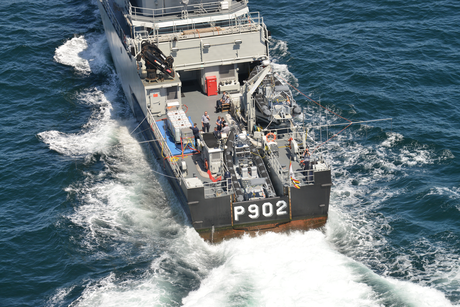
Vlotte samenwerking
Dit type oefeningen zijn mogelijk dankzij een degelijke samenwerking tussen verschillende partners. Overeenkomsten zoals deze tussen de dienst Marien Milieu, de Civiele Bescherming en Hulpverleningszone 1 ondertekend op 13 juli 2021 en goede relaties tussen de kustwachtpartners dragen bij tot het slagen van oefeningen én echte bestrijdingsoperaties.
Vincent Van Quickenborne, vice-eersteminister en minister van Noordzee: “De Noordzee is ons grootste natuurgebied. Dat moeten we goed beschermen. Dat doen we onder meer met bestrijden van luchtvervuiling en door zwerfvuil uit de zee te halen. Maar een ongeluk is snel gebeurd. Zeker op één van de drukste zeegebieden ter wereld. Dan moet er snel ingegrepen worden. Sinds vorig jaar bundelen de dienst Marien Milieu, Civiele Bescherming en Hulpverleningszone 1 (regio Brugge-Oostende) hun krachten. Zo kan eventuele vervuiling bij een incident snel en efficiënt worden bestreden.”
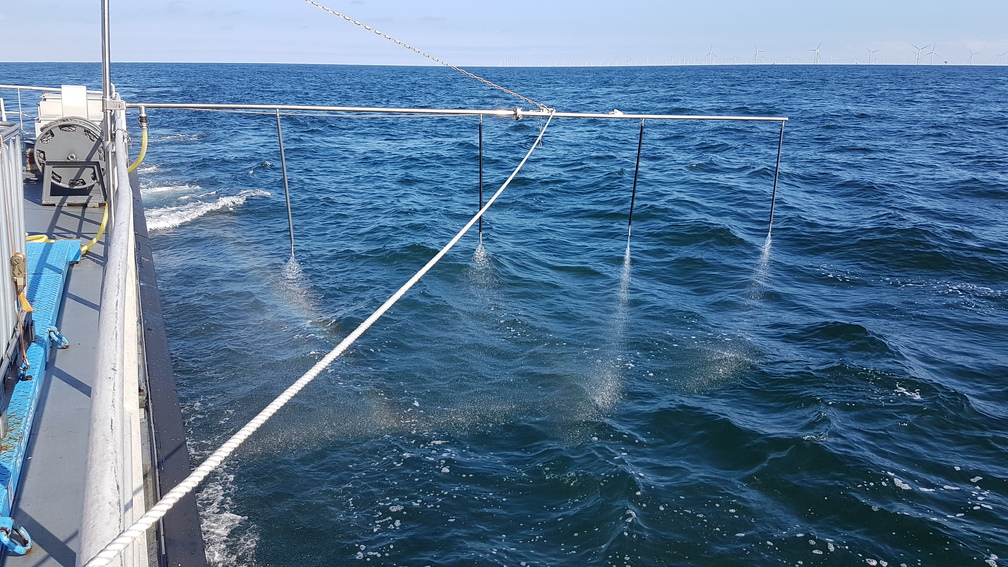
Van 30 mei tot 2 juni heeft het Belgische luchttoezichtvliegtuig een internationale zending uitgevoerd naar Bretagne in Frankrijk. Het vliegtuig is eigendom van en wordt beheerd door het Koninklijk Belgisch Instituut voor Natuurwetenschappen (KBIN), en wordt in België veelvuldig ingezet in het kader van de Kustwacht. Ook internationale missies staan op de agenda. Het doel van deze zending was tweeledig: het vliegtuig nam deel aan een internationale oefening voor de detectie van chemische verontreiniging en controleerde met de sniffer sensor de luchtuitstoot van schepen aan de grens van de Emission Control Area (ECA) op de navolging van de internationale emissieregelgeving die is vastgelegd in de zogenaamde MARPOL Annex VI .

MANIFESTS Sea Trials
In tegenstelling tot de steeds minder frequent vastgestelde vervuiling door olie neemt de vervuiling door andere chemische stoffen op zee gestaag toe. Als gevolg van het toenemend transport van chemische producten met tankers, en de complexe internationale wetgeving (MARPOL Annex II) die lozingen van bepaalde stoffen toelaat onder specifieke voorwaarden, vertoont de impact van chemische vervuiling op het mariene milieu dus ook een stijgende trend.
De variatie van getransporteerde chemicaliën is groot, wat heel wat uitdagingen creëert voor de overheden die verantwoordelijk zijn voor monitoring en handhaving. Onder andere de detectie en identificatie van chemicaliën op het zeeoppervlak door luchteenheden is bijzonder complex. Daarnaast is er nog onvoldoende kennis over het gedrag van verschillende chemicaliën op zee, wat de modelering van de drift van deze verontreinigingen in de tijd en de ruimte bemoeilijkt.
Het project MANIFESTS (MANaging risks and Impacts From Evaporating and gaseous Substances To population Safety) probeert aan deze uitdagingen een antwoord te bieden. Voor dit project werden de voornaamste categorieën van getransporteerde chemicaliën geïdentificeerd. Verschillende sensoren werden getest op hun capaciteiten om verschillende stoffen te identificeren. Dit werd eerst in een laboratoriumomgeving gedaan, maar de ultieme test was een oefening op zee waarbij sensoren op schepen en op vliegende eenheden werden uitgeprobeerd. De klemtoon lag hierbij op sterk evaporerende stoffen.

Tijdens de oefening op zee werden verschillende stoffen geloosd op zee (in beperkte hoeveelheid), waarna ze door verschillende vliegende eenheden werden geobserveerd. Het Belgische kustwachtvliegtuig was één van vier vliegtuigen die bij de oefening werden ingezet, naast de Spaanse en Franse kustwachtvliegtuigen en een onderzoeksvliegtuig van het Franse Office National d’Etudes et de Recherches Aérospatiales (ONERA). De kustwachtvliegtuigen werden voornamelijk gebruikt voor de kartering van de vlek voor de modelering, de detectie via radar en infrarood. Het vliegtuig van ONERA werd uitgerust met 2 hyperspectraalsensoren die speciaal ontwikkeld zijn voor de detectie van chemicaliën zowel op het wateroppervlak als in de atmosfeer (gaswolken).

De oefening op zee is goed verlopen en het Belgische kustwachtvliegtuig heeft een constructieve bijdrage kunnen leveren aan het verzamelen van de veldgegevens. Het is nu verder aan de wetenschappers om de modellen op punt te stellen en om de sensors te optimaliseren zodat lozingen van chemicaliën in de toekomst beter gemonitord kunnen worden.
Het KBIN (Marine Forecasting Centre – MFC) is betrokken partner bij het MANIFESTS project. Het Instituut staat hierbij vooral in voor de verdere ontwikkeling van mathematische modellen die de drift en het gedrag van andere schadelijke stoffen dan olie (zogenaamde HNS – Hazardous and Noxious Substances) kunnen simuleren, waarbij de kennishiaten van interne modellen wordt gereduceerd door implementatie van de nieuw opgedane kennis over evaporatie-, vuur- en explosieprocessen van gassen en evaporatoren, en waarbij een grondige onderlinge vergelijkings- en validatie-oefening van modellen wordt uitgevoerd om de sterktes en zwaktes beter te begrijpen. Verder draagt het KBIN ondermeer bij aan de ontwikkeling van een beslissingsondersteunend systeem (decision-support system of DSS; proof of concept) die nuttige informatie zoals modelsimulaties, een HNS database, kwetsbaarheidskaarten, enz. moet integreren met als doel het crisisbeheer van HNS-incidenten door bevoegde maritieme diensten vlotter te laten verlopen.

Monitoring van scheepsemissies aan de ECA grens
De MANIFESTS Sea Trials vonden plaats net ten westen van Brest, in Franse wateren. Aangezien dit ook de zone is waar de ECA grens zich bevindt, waar schepen moeten overschakelen naar laagzwavelige brandstoffen wanneer ze het gebied binnenvaren, werd gekozen om de deelname van het Belgische Kustwachtvliegtuig aan de MANIFESTS-oefening te combineren met een controle op overtredingen van de internationale regelgeving voor scheepsemissies. In totaal werden tijdens de zending 62 schepen gecontroleerd. 18 hiervan bevonden zich in de directe omgeving van de ECA-grens, de andere vaartuigen werden waargenomen op de heen- en terugweg van en naar Bretagne. Van de 18 schepen op de grens toonden zes verdachte zwavelwaarden, terwijl twee vaartuigen een hoge NOx uitstoot hadden. Eén vaartuig werd waargenomen met zowel een hoge NOx uitstoot als een hoog zwavelgehalte in zijn brandstof. Niet alle waarnemingen betreffen overtredingen aangezien sommige vaartuigen net buiten de ECA waargenomen werden, maar hoogst waarschijnlijk was hun uitstoot tijdens het laatste deel van hun passage in de ECA reeds boven de limiet. Een meer gedetailleerde analyse dient nog te worden uitgevoerd, maar uit deze preliminaire resultaten blijkt duidelijk dat meer controle aan de ECA grens erg nuttig kan zijn voor de verbetering van de MARPOL Annex VI handhaving. België trekt op dit vlak al jaren aan de internationale kar en probeert hier dan ook een draagvlak voor te creëren bij andere Noordzeekuststaten, in kader van het Bonn Akkoord. Eén van de Belgische voorstellen is om samen intensieve controlecampagnes te organiseren aan de ECA-grens. Deze zending kan alvast als interessante voorbeeldstudie dienen om het belang van dit soort campagnes aan te tonen.

Op zaterdag 25 juni (voormiddag) en zondag 26 juni (volledige dag) krijgt het publiek de kans om het nieuwe Belgische oceanografische onderzoeksschip RV Belgica te bezoeken in haar peterstad Gent. De RV Belgica maakt voor deze gelegenheid de reis naar de Rigakaai (North Sea Port, Gent) waar ze in de namiddag van zaterdag 25 juni ook officieel wordt gedoopt.
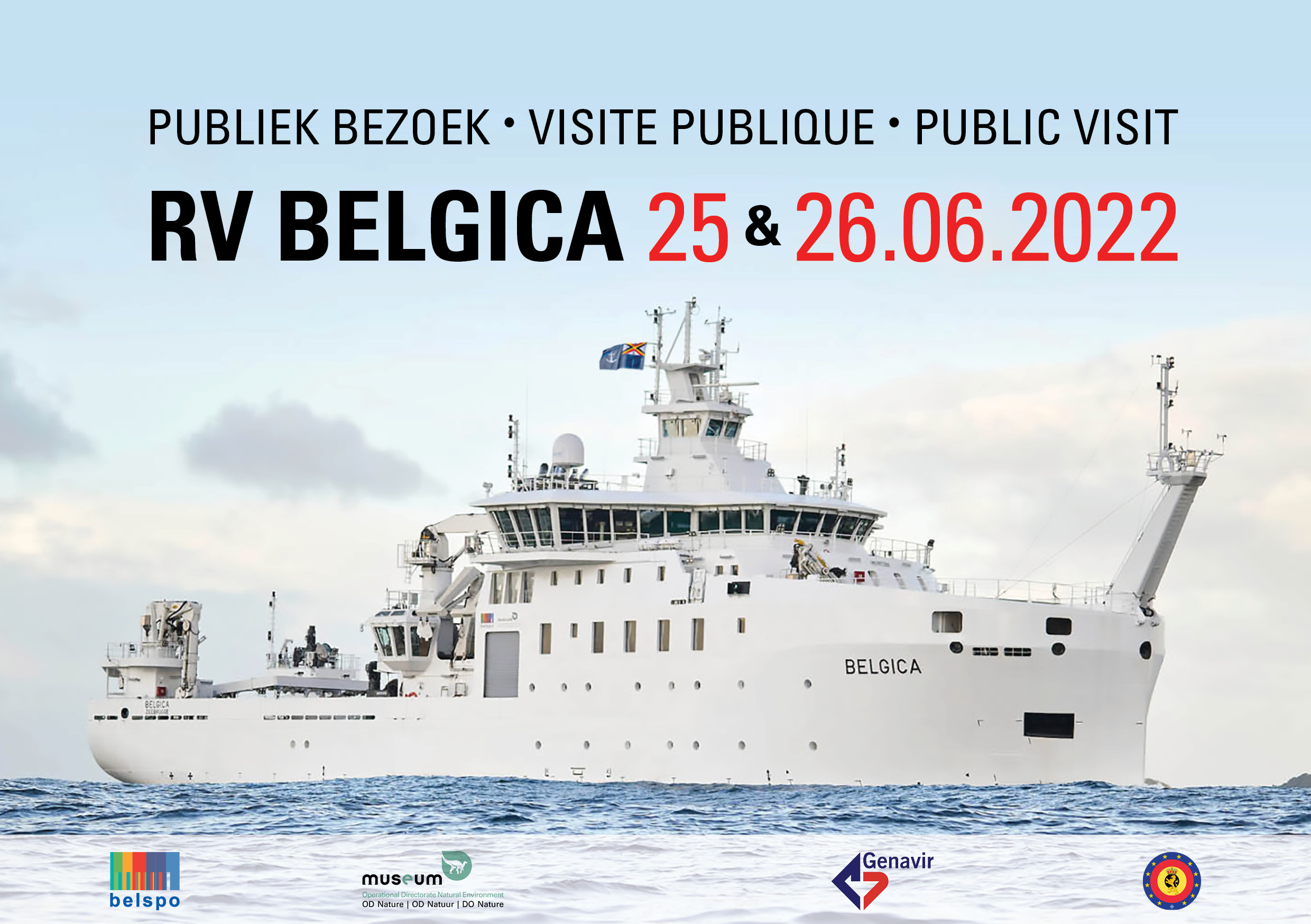
Voor een bezoek aan de RV Belgica geldt een registratieplicht (zie verder). Aan boord kan men het leven aan boord van een onderzoeksschip ontdekken, en demonstraties door verschillende wetenschappelijke gebruikers van het schip bijwonen (wetenschapsbeurs).
Het eventterrein – met uitzondering van de RV Belgica – is tijdens de opendeurmomenten wel vrij toegankelijk voor het grote publiek, zonder registratie. In een heuse technologiebeurs kan u hier zonder registratie de activiteiten ontdekken van DEME, NH Marine, Expo Marine, Hulpbetoon in de Marine, Informatie Centrum Defensie, ABC Engines, North Sea Drones, Statamat en Thales. Op de kade treft u ook enkele foodtrucks en gelegenheid voor een drankje aan, alsook enkele bijkomende activiteiten.
De doopceremonie op zaterdagnamiddag is een gesloten evenement waarvoor het publiek zich niet kan inschrijven.
Praktische informatie
Timing
Op zaterdag 25 juni kunnen bezoekers van 9u30 tot 11u30 aan boord gaan van de RV Belgica. Om 12u30 moeten de laatste bezoekers het schip hebben verlaten. Het eventterrein sluit om 14:00.
Op zondag 26 juni kan men van 9u30 tot 11u30, en van 13u30 tot 17u30 aan boord gaan, en moeten bezoekers respectievelijk uiterlijk om 12u30 en 18u30 weer van boord zijn. Het eventterrein sluit om 18:30.
Registratie
U kan uw plaatsen voor een bezoek aan de RV Belgica hier reserveren.
Extra informatie
Aangezien delen van de RV Belgica beperkte bewegingsmogelijkheden bieden zijn wordt het dragen van rugzakken, draagtassen enz. ontmoedigd. Kinderwagens, buggy’s, rolstoelen enz. kunnen omwille van de toegang via een loopbrug en de vele trappen die in het schip moeten worden genomen helaas niet aan boord worden toegelaten. Hou de vele trappen ook in gedachten indien u van plan bent om het schip te bezoeken met kleine kinderen.
Gebruik van het openbaar vervoer wordt aangemoedigd. Voor wie met de wagen komt zijn in de buurt onder meer parkeermogelijkheden voorzien op het terrein tussen de Sint-Theresiastraat en de Dukkeldamstraat (braakliggend terrein Stukwerkers, ten NW van het eventterrein aan de andere kant van het Grootdok waar de RV Belgica zal liggen), op het terrein ‘Park & Ride Stad Gent (ten ZO van het eventterrein langs de Vliegtuiglaan) en op het terrein ‘Park & Ride Muide’ (ten ZW van het eventterrein, ten Z van het rond punt).
Volg de RV Belgica online!
Facebook: https://www.facebook.com/HowBigIsBelgica.be/
Twitter: https://twitter.com/HowBigIsBelgica
Website @ RBINS: https://odnature.naturalsciences.be/belgica/en/
Website @ BELSPO: https://www.belspo.be/belspo/NewRV/index_en.stm
Het ‘Open Schip Weekend’ van de RV Belgica is een organisatie van het Federaal Wetenschapsbeleid (BELSPO), het Koninklijk Belgisch Instituut voor Natuurwetenschappen (KBIN), de private operator Genavir, de Belgische Marine, North Sea Port, de Stad Gent en de Universiteit Gent, met ondersteuning van de Lokale Politie Gent, de Scheepvaartpolitie en de Brandweer Zone Centrum.

